Emmanuel Lacroix (born 27 August 1968 [1] ) is a Paralympic athlete from France.
Emmanuel Lacroix (born 27 August 1968 [1] ) is a Paralympic athlete from France.
Emmanuel Lacroix is one of the few people to have competed in summer and winter paralympics multiple times. He began his paralympic career in 1988 in the swimming pool, competing in A8 classification races and winning a bronze in the 100m butterfly and silver in the 100m backstroke and freestyle races. He competed in 1992 in Barcelona but without success. For the next summer games in 1996 Lacroix changed to athletics and won a bronze in the T44-46 classification 1500m and 5000m races. In 2000 he ran the 5000m and marathon, winning a silver in the 1500m and a bronze as part of the French 4 × 400 m relay team. The 2004 Summer Paralympics brought a bronze in the 4 × 400 m.
In his first winter games, in 1994, he competed in the 7.5 km free technique LW5-8 biathlon and in cross-country skiing 10 km free, 5 km classical and 20 km classical technique for LW6/8. He again competed in 1998 Winter Paralympics where he won a bronze, in the 15 km free technique race for LW5/7, 6l8 as well as competing over 20 km and 5 km classical styles. His last paralympics was in 2006, in the 7.5 km and 12.5 km standing biathlon and the 5 km, 10 km and 20 km standing cross country skiing events. [2]
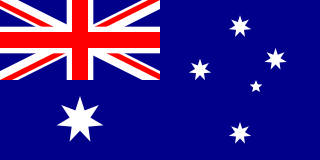
Australia participated in the 2006 Winter Paralympics in Torino, Italy, from 10 to 19 March 2006. The Turin games represented Australia's ninth appearance at the Winter Paralympic Games. Australia were represented by 10 athletes, which made it their largest ever Winter Paralympic Games contingent. Australia competed in three sports: alpine skiing, biathlon, and cross-country skiing, but not ice sledge hockey or wheelchair curling. Prior to the games, the Australian Paralympic Committee set a target of two medals, down from the seven that were won four years earlier in Salt Lake City. This was due to the retirement of three-time medallist Bart Bunting, as well as changes made to the disability classification system. This target was met with Australia winning a silver and a bronze medal to finish equal 13th on the medal tally.
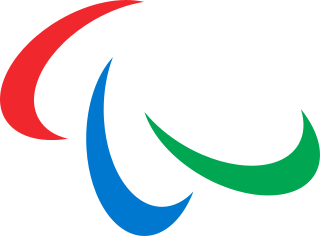
Paralympic cross-country skiing is an adaptation of cross-country skiing for athletes with disabilities. Paralympic cross-country skiing is one of two Nordic skiing disciplines in the Winter Paralympic Games; the other is biathlon. Competition is governed by the International Paralympic Committee (IPC).

Denmark made its Paralympic Games début at the 1968 Summer Paralympics in Tel Aviv with a delegation of eight competitors, in swimming and table tennis. The country has participated in every subsequent edition of the Summer Paralympics, and in every edition of the Winter Games since 1980.

The 2011 IPC Biathlon and Cross-Country Skiing World Championships took place from 2–11 April 2011 in Khanty-Mansiysk, Russia. IPC stands for International Paralympic Committee. This was the first time these championships were hosted in Russia, and the first time the championships were hosted in the same city as the IBU Biathlon World Championships which was held in Khanty-Mansiysk from March 3 to March 13, 2011.

Kirill Mikhaylov is a Russian cross-country skier, biathlete, and four-time Paralympic Champion. He competed in the classification category, standing events.
Vladimir Kononov is a Russian cross-country skier and Paralympian. He competes in classification category standing events, and is classified LW5/7.

Grygorii Vasylovych Vovchynskyi is a Ukrainian biathlete, cross-country skier, and Paralympian. He is classified LW8, and compete in classification category standing.
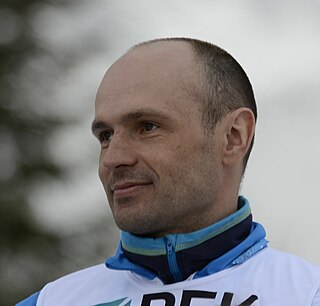
Vitaliy Volodymyrovych Lukyanenko is a Ukrainian biathlete, cross-country skier, and Paralympian.
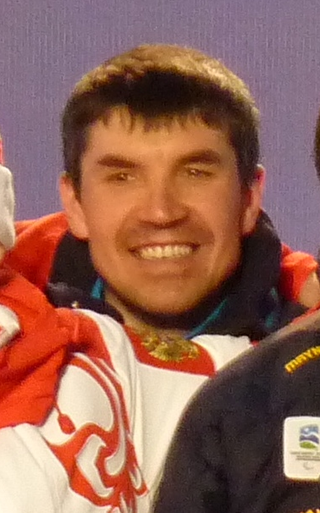
Volodymyr Ivanov is a Ukrainian biathlete, cross-country skier, sighted guide, and Paralympian.
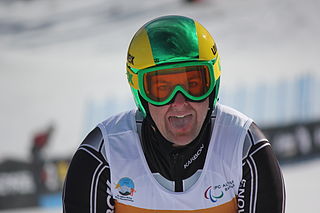
LW1 is a para-alpine standing skiing classification for people with severe lower extreme disabilities in both extremities. It includes both skiers with amputations and cerebral palsy. International classification is done through IPC Alpine Skiing, and national classification through local national sport federations. LW1 classified skiers use outriggers, and two skis or one ski with a prosthesis. Other equipment is used during training such as ski-tips, ski-bras, and short skis.
LW3 is a para-alpine and para-Nordic standing skiing sport class defined by the International Paralympic Committee (IPC) for skiers with a disability affecting both legs, with double below knee amputation or a combined strength total for both legs of 60, with 80 as the baseline for people without disabilities. For international skiing competitions, classification is done through IPC Alpine Skiing or IPC Nordic Skiing. The classification has two subclasses for para-alpine skiing: LW3.1 which is for people with double below the knee amputations or similar disabilities, and LW3.2 which is for people with cerebral palsy that involves moderate athetoid, moderate ataxic impairment or slight diplegic involvement.
LW4 is a para-alpine and para-Nordic standing skiing sport class defined by the International Paralympic Committee (IPC) for skiers who may have a disability in one lower extremity, which may be a result of a leg amputation below the knee, knee arthrodesis or a hip arthrodesis. For international skiing competitions, classification is done through IPC Alpine Skiing or IPC Nordic Skiing. A national federation such as Alpine Canada handles classification for domestic competitions.
LW5/7 is a standing para-alpine and para-Nordic skiing classification for skiers with upper extremity issues in both limbs that may include double amputation of both arms and hands or dysmelia of the upper limbs. The class has three subclasses defined by the location of the disability on the upper extremities. International classification is done by IPC Alpine Skiing and IPC Nordic Skiing. On the national level, classification is handled by national sports federation such as Cross-Country Canada.

LW6/8 is a para-alpine and para-Nordic standing skiing sport class, a classification defined by the International Paralympic Committee (IPC) for people with an upper extremity issue who have paralysis, motor paresis affecting one arm, a single upper arm amputation or CP8 classified cerebral palsy. LW6/8 skiers use two skis and one pole in both para-alpine and para-Nordic skiing.
LW9 is a para-alpine and para-Nordic standing skiing sport class, a classification defined by the International Paralympic Committee (IPC) for people with upper and lower limb function problems, and includes cerebral palsy skiers classified CP5, CP6 and CP7, along with people with hemiplegia or amputations. For international skiing competitions, classification is done through IPC Alpine Skiing or IPC Nordic Skiing. A national federation such as Alpine Canada handles classification for domestic competitions. This classification is separated into two subclasses including LW9.1 and LW9.2.

Armenia sent a delegation to compete at the 2014 Winter Paralympics in Sochi, Russia from 7–16 March 2014. This was the nation's fifth appearance at a Winter Paralympic Games. The delegation consisted of a single alpine skier, Mher Avanesyan, who lost both arms as a child after coming into contact with a high-voltage electrical wire. In the men's standing slalom he came in 34th place out of 35 competitors who finished the race, and he failed to finish the giant slalom.
Shoko Ota is a Paralympic biathlete and cross-country skier.

Poland competed at the 1994 Winter Paralympics in Lillehammer, Norway. 15 competitors from Poland won 10 medals including 2 gold, 3 silver and 5 bronze and finished 12th in the medal table.
Natalia Kocherova is Russian Paralympic wheelchair and cross-country skier from Omsk.

The United States competed at the 1988 Winter Paralympics in Innsbruck, Austria. 45 competitors from the United States won 7 gold medals, 17 silver medal and 6 bronze medal and finished 6th in the medal table.